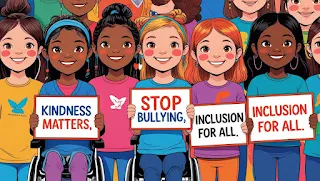Bullying Prevention: Protecting Children with Special Needs
Introduction
Bullying is a painful reality for many children, but children with special needs often face an even greater risk. Whether a child has autism, Down syndrome, cerebral palsy, or another disability, they deserve to feel safe, valued, and respected in every environment. As parents, caregivers, teachers, and community members, we have a shared responsibility to protect them and create spaces where they can thrive.
---
Why Are Children with Special Needs More Vulnerable to Bullying?
Differences in Communication: Children who communicate differently—whether verbally or nonverbally—can become easy targets for bullies.
Social Challenges: Many children with special needs may struggle with reading social cues, making it harder to respond to or report bullying.
Isolation: Sometimes, children with disabilities are isolated from peers, making them more vulnerable to bullying.
Lack of Awareness in Schools: Without proper awareness, schools may overlook the unique challenges these children face.
---
How to Protect Children with Special Needs from Bullying
1. Educate and Empower
Teach children about bullying in a way they can understand.
Help them recognize what bullying looks and feels like.
Practice role-playing how to respond or seek help.
2. Promote Inclusive Classrooms
Advocate for inclusive education where all children learn together.
Teachers should model kindness, respect, and inclusion.
Use classroom activities that encourage teamwork and empathy.
3. Work with Schools
Talk to school administrators about anti-bullying policies.
Request Individualized Education Program (IEP) goals related to social skills and self-advocacy.
Encourage schools to provide disability awareness programs for all students.
4. Encourage Peer Support
Foster friendships between children with special needs and their typically developing peers.
Buddy systems and peer mentoring programs work well to build strong relationships.
5. Monitor and Communicate
Watch for signs of bullying like withdrawal, fear of going to school, or unexplained injuries.
Create open lines of communication at home where children feel safe sharing their experiences.
---
What Parents and Caregivers Can Do
Listen and Believe: Always take a child’s report of bullying seriously.
Teach Self-Advocacy: Help children practice how to say "Stop!" or seek help.
Work as a Team: Collaborate with teachers, counselors, and special educators to support your child.
Model Confidence and Assertiveness: Children learn from watching adults stand up for themselves and others.
---
Final Thoughts
Every child deserves to grow up in a world where they feel safe, loved, and respected. Preventing bullying is a responsibility we all share. By building inclusive schools and compassionate communities, we can protect children with special needs and empower them to flourish.




Comments